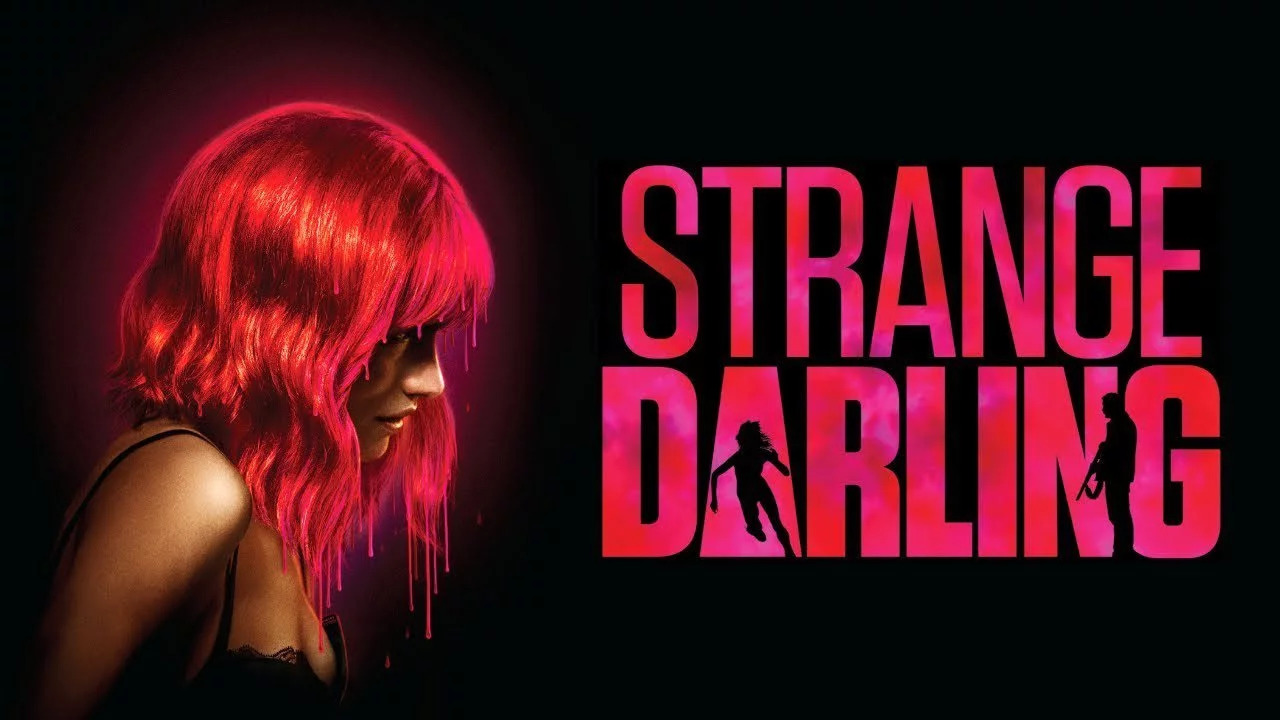“Can you guess what every woman’s worst nightmare is?”
Cassandra-Promising Young Woman
I had to make some last-minute changes to my viewing list because I realized some films were getting a VOD release. Strange Darling was at the top of my must-watch list. It is a psychological thriller that manages to blend tension and character-driven storytelling with a touch of surrealism. From the moment the film opens, it captivates with its gritty yet polished cinematography, setting the tone for a cat-and-mouse game that draws viewers into its dangerous and seductive world.

What sets Strange Darling apart from any run-of-the-mill slasher is its unpredictability. The narrative thrives on tension and subverts the audience’s expectations. At first, it feels like a typical stalker-thriller setup, but as the story progresses, it twists into something much more complex. The film is a slow burn, but it uses that time to develop an atmosphere so thick with dread that it’s impossible not to be engrossed.

Much of this success comes from the lead performances, which are subtle yet potent. Willa Fitzgerald shines as the film’s lead, delivering a nuanced performance that balances fragility with an undercurrent of strength. Her portrayal of a woman caught in a deadly game of manipulation and survival is gripping. Kyle Gallner, as the primary antagonist, is equally captivating. Gallner has a knack for playing characters with a quiet menace, and here, he brings a chilling intensity to his role. His performance is understated yet powerful, making his character feel both threatening and disturbingly charismatic. Gallner’s dynamic with Fitzgerald is one of the film’s strongest elements, as they play off each other’s performances with a palpable tension.

However, while Strange Darling excels in its early and middle acts, the final act feels a bit underwhelming. The tension that has been meticulously built starts to unravel slightly as the film leans into more conventional genre tropes. While it doesn’t entirely derail the experience, it does make the resolution feel less satisfying than the nerve-wracking buildup promised.

Strange Darling succeeds largely due to its stellar cast and the assured direction of JT Mollner. His direction is sharp, using silence and minimal dialogue to build tension, giving the film a suffocating atmosphere that keeps the audience on edge. Mollner’s ability to draw out subtle performances from his cast is a testament to his understanding of the genre’s intricacies. His deliberate pacing works well. Even if the final act falters slightly, it’s clear his vision remains strong throughout
Strange Darling still stands as a masterful exploration of obsession, paranoia, and fear. Its psychological layers make it a film that sticks with you long after the credits roll, even if its final act doesn’t quite live up to the promise of the first two-thirds. Fans of psychological horror with a unique, unsettling edge will find much to admire, and it solidifies itself as a standout in indie thriller cinema.
Rating: 8/10




